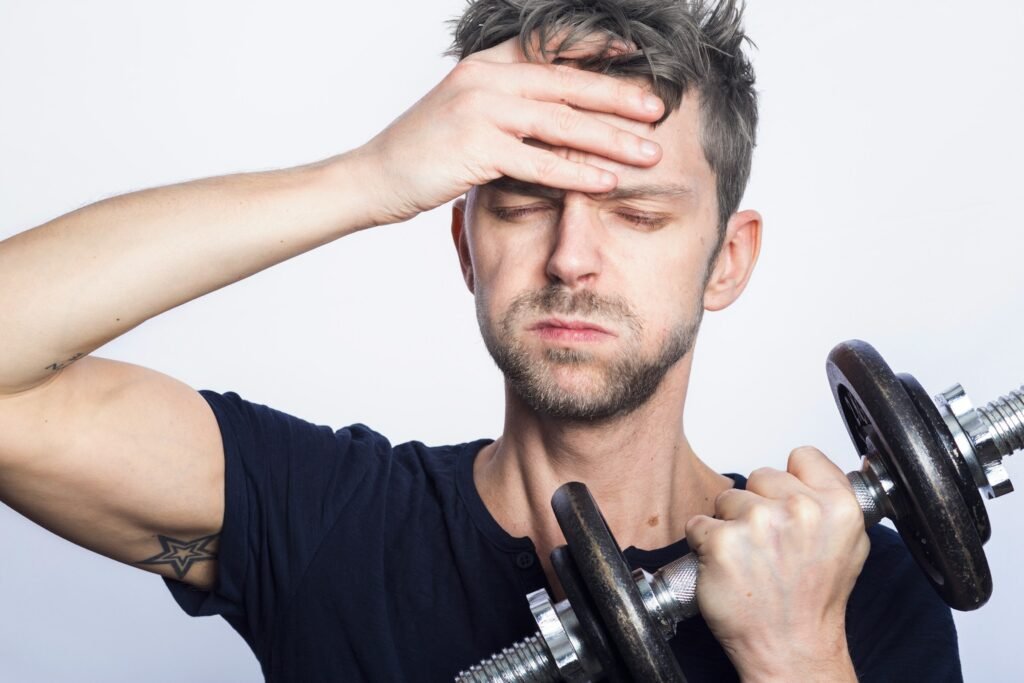Swimming Pool Safety Tips for 2024 : As the allure of crystal-clear waters in residential infinity pools, or the fun-filled afternoons beside outdoor kitchens, grows more popular, so too does the importance of swimming pool safety. Ensuring these aquatic paradises are secure spaces for family and friends is not just a legal obligation but a moral one, aimed at preventing accidents and fostering a safe environment. Swimming pool safety encompasses a broad range of considerations, from the correct installation and maintenance of pool decks to the availability of first aid kits, highlighting the critical need for awareness and proper safety protocols.
Thank you for reading this post, don't forget to subscribe!This article aims to navigate the essential components of swimming pool safety, laying groundwork for understanding the risks associated with pool ownership, and the best practices to mitigate them. Key topics include the importance of having readily accessible first aid kits, teaching swimming lessons, enforcing pool rules, and engaging in pool games that promote safety. Additionally, maintaining a clean and hazard-free pool environment, alongside emergency preparedness, will be discussed to ensure every dip in the pool is both enjoyable and safe. Through a focus on essential safety equipment and adherence to recommended pool maintenance routines, this guide seeks to equip pool owners with the knowledge needed to protect their aquatic havens in 2024.
Understanding Pool Safety Risks
Common Risks
Swimming pools present several hazards that can lead to serious injuries or fatalities. Slip and fall injuries are common due to slippery surfaces around the pool, often exacerbated by pool chemicals and water . The chemicals used to maintain pool cleanliness can also pose significant health risks if ingested or inhaled, potentially causing respiratory problems or brain damage . Entrapment injuries are another serious concern, where swimmers might get limbs or hair caught in pool filters or suction points, leading to severe injuries or drowning . Additionally, electrical hazards from improperly grounded pool systems can lead to electrocution . Understanding these risks is crucial for preventing accidents and ensuring a safe swimming environment.
Importance of Supervision
Supervision is a critical component of pool safety, particularly for children and non-swimmers. Drowning is alarmingly quick and silent, making vigilant, undistracted adult supervision essential . Designating a responsible adult as a Water Watcher, who avoids distractions such as mobile phones or conversations, can significantly reduce the risk of drowning . This supervisor should remain within arm’s reach of swimmers, ready to react immediately to any emergencies . Proper supervision ensures that even if an accident occurs, immediate action can be taken to mitigate the consequences.
Educating Pool Users
Educating pool users about safety risks and proper behavior in and around the pool is vital. Swimming Safety Tips should be communicated clearly to all pool users, emphasizing the importance of feeling comfortable and healthy before swimming . Users should be informed about the potential for cold shock and the importance of acclimatizing to water temperatures . Regular safety briefings can help reinforce the rules and ensure that all swimmers understand the importance of following them to prevent accidents . Additionally, displaying Water Safety Season printable posters and distributing safety checklists can further enhance awareness and encourage safe swimming practices .
Essential Swimming Pool Safety Equipment
Fencing and Barriers
Fencing around swimming pools is essential to prevent accidents, especially for homes with children and pets. There are two main types: the pool fence or internal barrier, which must be at least 1200mm high, and the boundary or dividing barrier, which must be at least 1800mm high. Regulations often include specifications for gates and slat spacing to ensure safety. Additionally, objects that could reduce the fence’s effective height, like garden sheds or pool filter boxes, should not be placed within 500mm of the barrier.
Safety Covers
Safety covers are vital for preventing unauthorized access and reducing accident risks. Load-bearing covers can support significant weight, preventing accidents, especially for families with children or pets . For instance, the Loop-Loc pool safety cover is designed to withstand the weight of cars and even elephants, ensuring robust protection . They also feature unique safety components like CABLE-LOC™, GAPGUARD®, and PROTECT-A-GAP™ to minimize gaps around the cover’s edges, enhancing safety . High-quality safety covers not only prevent accidents but can also reduce liability insurance costs . It is recommended to choose covers with durable materials and safety certifications, such as those complying with ASTM F1346 standards .
Lifeguarding Tools
For pools with lifeguard services, having the right equipment is essential for effective rescue operations. Lifeguards should have access to items like rescue tubes, lifebuoys, backboards, and shepherd’s crooks to assist swimmers in distress . Rescue tubes, often made of dense foam with a vinyl exterior, are crucial for quick rescues . Lifeguards also use life vests and rescue boards, which are buoyant enough to support multiple victims . Medical supplies such as first aid kits, emergency oxygen, and automated external defibrillators (AEDs) are mandatory to address both minor injuries and severe emergencies . Lifeguards should be equipped with personal protective equipment (PPE) like gloves and goggles to ensure their safety while performing rescues .
Maintaining a Safe Pool Environment
Regular Maintenance
Regular pool maintenance is essential for a clean and safe swimming environment. Similar to vehicle upkeep, neglecting pool maintenance can lead to poor water quality, bacteria buildup, and expensive equipment damage. Daily tasks should include cleanliness checks and water level monitoring, ensuring the pH level stays between 7.2-7.6 for effective sanitization. Regular vacuuming removes debris, preventing chemistry imbalances. Additionally, clean filters are crucial as dirty filters fail to remove contaminants, leading to cloudy water and health risks.
Chemical Balance
Achieving and maintaining the correct chemical balance in a swimming pool is essential for the safety and comfort of swimmers, as well as for the longevity of the pool itself . Regular testing of pH levels, chlorine levels, and alkalinity is necessary. Adjustments should be made carefully when imbalances are detected. For instance, using an alkalinity increaser can help maintain levels between 80-120 ppm, acting as a pH buffer, while ideal calcium chloride levels should range from 200-400 ppm to prevent plaster damage . Chlorine plays a crucial role in sanitizing the pool, and its effectiveness is closely tied to the pool’s pH level. It is important to maintain chlorine levels between 1-3 ppm to ensure it performs its role effectively .
Water Clarity
Good water clarity is vital for safety and aesthetics, allowing clear visibility of swimmers and ensuring the security of suction covers. Maintaining low turbidity levels is essential, with the NSFI recommending pool water turbidity not exceed 0.5 NTUs and the filtration system returning water to this level within 8 hours post-peak use. Proper filtration and circulation are key, as they help remove suspended particles, keeping the water clean and safe. Regular testing and chemical adjustments are crucial to prevent contaminants and maintain a safe swimming environment.
Emergency Preparedness
First Aid Kit Essentials
Every pool should be equipped with comprehensive first aid kits to handle emergencies effectively. These kits should include a variety of essential items such as assorted bandages, adhesive tapes, antibiotic ointment packs, aspirin, a breathing barrier, cold compresses, non-latex gloves, hydrocortisone ointment packs, blunt-tip scissors, tweezers, roller bandages, sterile gauze pads, a thermometer, triangular bandages, and a space blanket . It’s crucial to keep these kits easily accessible and regularly checked to ensure all items are in good condition and ready for use .
CPR and First Aid Training
The importance of CPR and first aid training cannot be overstated in emergency preparedness. The American Red Cross offers comprehensive training programs that cover essential life-saving skills, including CPR, the use of an Automated External Defibrillator (AED), and first aid for both adults and children. These courses are designed to meet OSHA compliance and workplace requirements and are available in various formats such as in-person, online, or blended learning to accommodate different learning preferences . Upon completion, participants receive a certification valid for two years, empowering them to act confidently and effectively in life-threatening situations .
Emergency Procedures
Proper emergency procedures should be established and familiar to all pool users to ensure swift and organized responses to any incidents. This includes knowing how to use the contents of first aid kits, executing CPR, and operating an AED. It’s also essential to have clear, step-by-step guides available in high-traffic areas of the pool for quick reference. These guides should cover the basics of recognizing when someone needs help, how to perform rescues with tools like life hooks and safety ring buoys, and the importance of immediate action in emergency situations . Regular drills and reviews of these procedures can further enhance readiness and ensure everyone is prepared to respond effectively when needed .
Conclusion
Through a comprehensive exploration of swimming pool safety, this article has shed light on the essential practices and equipment necessary to maintain a secure environment around pools. From understanding the inherent risks associated with swimming pools, including slip and fall incidents and chemical hazards, to the importance of supervision, educating pool users, and ensuring the availability of lifesaving equipment, the key points underscore the multifaceted approach required to ensure safety. Emphasis on regular maintenance, chemical balance, and emergency preparedness further highlights the article’s commitment to equipping pool owners with the knowledge needed to foster a safe and enjoyable swimming experience.
Ultimately, the responsibility of ensuring a swimming pool is a haven of fun rather than a source of danger lies with pool owners and users alike. By adhering to the best practices outlined, including the critical aspects of supervision, education, and preparation, the goal of minimizing accidents and enhancing safety around pools can be achieved. The implications of these practices extend beyond just compliance with legal obligations; they reflect a commitment to protecting loved ones and the community at large. As we look towards 2024, let these guidelines serve as a beacon for creating safer swimming environments, inviting a future where the joy of swimming is matched by an unwavering commitment to safety.
FAQs
1. What is the leading safety concern at swimming pools? Drowning is the primary safety issue at swimming pools. It can occur swiftly and quietly, often without any noticeable signs of distress, emphasizing the importance of constant vigilance.
2. How can I enhance the safety of my swimming pool? Improving your pool’s safety can be achieved by constructing and maintaining barriers like pool safety fences, gates, power safety covers, and alarms. These barriers should be designed to prevent children from bypassing them to gain unsupervised access to the pool.
3. What are the essential safety guidelines for swimming pool users? The top five swimming pool safety rules include:
- Always walk, don’t run around the pool.
- Follow instructions and adhere to the pool’s rules.
- Avoid diving in the shallow end of the pool.
- Refrain from roughhousing.
- Keep away from drains and covers. Additional tips include never swimming alone, practicing sun safety, and using pool safety equipment correctly.
4. How can I ensure my above ground pool is safe? To secure your above ground pool, consider the following measures:
- Install fencing around the pool as required by many state laws.
- Use safety ladders with a locking gate or mechanism.
- If your house has a deck leading to the pool, ensure it has self-closing, self-latching gates.
- Install door alarms on doors that provide access to the pool deck.



